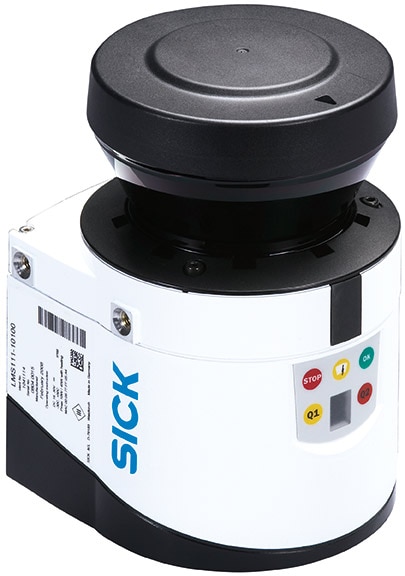The Vienna Secession exhibition center, a union of visual artists, is presenting the Beethoven Frieze by Gustav Klimt as part of its exhibition entitled "Close-up - Gustav Klimt / Gerwald Rockenschaub - Plattform" until April 7, 2013. In doing so, the artwork has to be protected against potential vandalism. For this reason, 2d laser scanners from SICK have been deployed to place a watchful eye over the cycle of paintings.  On April 3, 1897, renowned artists including Gustav Klimt, Koloman Moser and other contemporary members of the union of artists from the turn of the previous century formed the Vienna Secession. Gerwald Rockenschaub developed a viewing platform at the Secession for the gallery housing of the Beethoven Frieze. This structure enables visitors to obtain an unusual perspective and an entirely new angle in terms of perceiving the work. This fully accessible installation makes it possible for the first time to view the large-format, up to five meter high frieze at eye-level.
On April 3, 1897, renowned artists including Gustav Klimt, Koloman Moser and other contemporary members of the union of artists from the turn of the previous century formed the Vienna Secession. Gerwald Rockenschaub developed a viewing platform at the Secession for the gallery housing of the Beethoven Frieze. This structure enables visitors to obtain an unusual perspective and an entirely new angle in terms of perceiving the work. This fully accessible installation makes it possible for the first time to view the large-format, up to five meter high frieze at eye-level. 
Enjoyment also for future generations
This cycle of paintings should also be preserved in an authentic state, as far as possible, for future generations. In order to do so, it is necessary to protect the work against the effects of aging, but also against damage - for example, resulting from vandalism. Moreover, the artwork should be monitored as unobtrusively as possible. Alarms in the event of unauthorized touching should be as discrete as possible, in order that the enjoyment of the artwork is not affected for curators, art-lovers and other interested parties. Another big challenge for the sensor technology deployed here is dust and dirt, as well as the daily cleaning of the platform. All of these requirements were fulfilled by system integrators PKE Electronics AG with LMS123 2D laser scanner from SICK.
Extremely flexible protection without adverse effects
 LMS123 2D laser scanner
LMS123 2D laser scanner
The laser detectors are used in diverse ways: vertically as "curtain detectors" for protecting pictures and walls or horizontally as "penetration detectors" for protecting ceilings and floors. The benefits of the LMS123 include easy and almost invisible installation and the ability to protect only those areas which actually require protection. This means that visitors can view important information relating to the cycle of paintings from a close-up perspective. Moreover, cleaning measures and other work can be carried out without the need for deactivating the protection system for the artwork.
- Product information: LMS123 2D laser scanner
- Product portfolio: 2D laser scanners, 3D laser scanners
- Customer information: Secession Vienna

